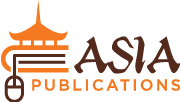Tags: chinese , chinese-english , chinese-simplified , educational , graded-reader , HSK , HSK4 , intermediate , learning , pinyin
The Three Beautiful Daughters : A Story in Simplified Chinese and Pinyin, 1200 Word Vocabulary Level
- Author: Jeff Pepper & Xiao Hui Wang
- Availability: 1 In Stock
- ISBN: 978-1-73316-506-8
CHF 15.40
In this, the 9th book in our Journey to the West series, we meet another new disciple: the river-dwelling monster Sha Wujing (literally, "Sand Aware of Purity" or "Sand Seeking Purity") who was once the Curtain Raising Captain but was...
In this, the 9th book in our Journey to the West series, we meet another new disciple: the river-dwelling monster Sha Wujing (literally, "Sand Aware of Purity" or "Sand Seeking Purity") who was once the Curtain Raising Captain but was banished from heaven by the Yellow Emperor for breaking an extremely valuable cup during a drunken visit to the Peach Festival. Later, the band of pilgrims arrive at a beautiful home seeking a simple vegetarian meal and a place to stay for the night. What they encounter instead is a lovely and wealthy widow and her three even more lovely daughters. This meeting is, of course, much more than it appears to be, and it turns into a test of commitment and virtue for all of the pilgrims, especially for Zhu Bajie, the lazy and lustful pig-man. Zhu's life is a constant battle against his appetites and desires, and in this book he faces his biggest battle yet.
This book is based on Journey to The West (西游记, xī yóu jì), an epic novel written in the 16th Century by Wu Chen'en. The novel is loosely based on an actual journey by the Buddhist monk Tangseng (called Xuanzang and Sanzang in earlier books), who traveled from the Chinese city of Chang'an westward to India in 629 A.D. and returned 17 years later with priceless knowledge and texts of Buddhism. Over the course of the book the band of travelers face the 81 tribulations that Tangseng had to endure to attain Buddhahood.
All of the stories in this series are all written in simple language suitable for intermediate Chinese learners. Our core vocabulary for this book is 1,200 words, made up of the 600 words of HSK-3 plus another 600 or so words that were introduced in the previous books of the series. These words are all in the glossary at the back of the book. Whenever we introduce a new word or phrase, it's defined in a footnote on the page where it first appears, and also appears in the glossary.
In the main body of the book, each page of Chinese characters is matched with a facing page of pinyin. This is unusual for Chinese novels but we feel it's important. By including the pinyin, as well as a full English version and glossary at the end, we hope that every reader, no matter what level of mastery they have of the Chinese language, will be able to understand and enjoy the story we tell here.
Pages: 206











